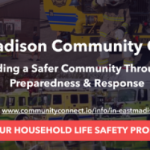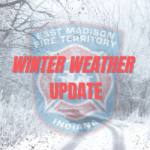
We would like to shed light on a crucial topic that affects each and every one of us: electrical hazards in the home, with a special focus on multi outlets.
Electricity is an essential part of modern living, powering our homes, appliances, and devices. However, it is important to remember that electricity can be dangerous if not handled with care. Faulty wiring, overloaded circuits, and outdated electrical systems are just a few of the potential hazards that can lead to electrical fires, electrocution, and property damage.
One common culprit in many households is the improper use of multi outlets or power strips. These devices, designed to expand the number of available outlets, can be incredibly convenient, but when misused, they pose a serious risk. Here are some important points to consider:
1. Overloading the Circuit: One of the main dangers associated with multi outlets is the temptation to plug in too many devices at once. Every electrical circuit has a maximum load it can handle. Overloading a circuit can lead to overheating, which can result in electrical fires. Always be mindful of the power requirements of your appliances and avoid exceeding the capacity of your electrical circuits.
2. Poor Quality and Outdated Power Strips: Using cheap or outdated power strips can increase the risk of electrical hazards. It is essential to invest in high-quality power strips that are certified by reputable organizations. Look for features like surge protection, circuit breakers, and indicator lights. Regularly inspect your power strips for signs of wear, such as frayed cords or damaged outlets, and replace them if necessary.
3. Proper Placement and Ventilation: When using multi outlets, ensure that they are placed in well-ventilated areas to prevent overheating. Avoid covering power strips with rugs, furniture, or other objects that can restrict airflow and increase the risk of fire. Maintain a clear space around the outlets to allow heat dissipation.
4. Avoid Daisy Chaining: Daisy chaining refers to the practice of connecting multiple power strips together in a series. This can overload the circuit and create a fire hazard. Instead, connect your devices directly to the power strip, avoiding the use of additional extension cords or power strips whenever possible.
5. Unplug When Not in Use: Many electrical fires are caused by devices that are left plugged in and unattended. When not in use, unplug your appliances and devices from the power strip. This not only reduces the risk of electrical hazards but also saves energy.
Remember, prevention is key when it comes to electrical hazards. Here are a few additional safety tips to help keep your home safe:
- Regularly inspect your home’s electrical system, including outlets, switches, and wiring. If you notice any signs of damage or wear, contact a qualified electrician for inspection and repairs.
- Do not attempt to perform electrical repairs or modifications unless you are a trained professional. DIY electrical work can lead to serious accidents and should be left to the experts.
- Teach your family members, especially children, about electrical safety. Emphasize the importance of never inserting foreign objects into outlets and avoiding water near electrical appliances.
By being aware of electrical hazards and taking the necessary precautions, we can greatly reduce the risk of accidents and protect our homes and loved ones.
If you have any questions or concerns regarding electrical safety or any other fire-related topics, please don’t hesitate to reach out to the East Madison Fire Territory. We are here to serve you and ensure your safety. Email us at pio@eastmadisonfire.com or contact us through our website at http://www.eastmadisonfire.com
Stay safe and enjoy the summer responsibly!




